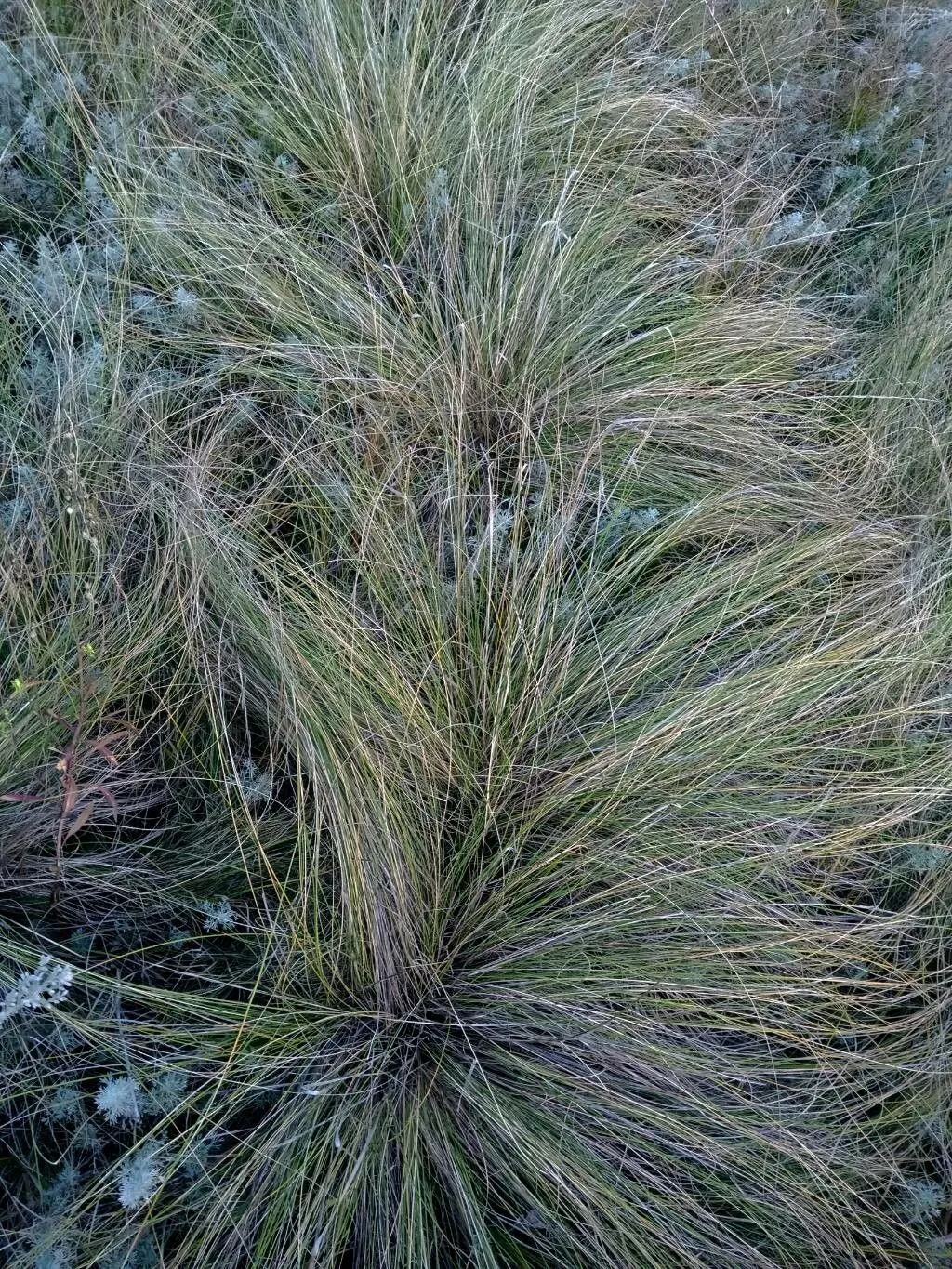
Author: (Nees) Hack. & Arechav.
Bibliography: Anales Mus. Nac. Montevideo 1: 336 (1896)
Year: 1896
Status: accepted
Rank: species
Genus: Nassella
Vegetable: False
Observations: S. Brazil to Argentina
Serrated tussock grass, scientifically known as Nassella trichotoma, is a hardy perennial grass belonging to the Poaceae family. This species was first documented in 1896 in the Anales del Museo Nacional de Montevideo by Hackel and Arechavaleta. The plant’s native range extends from southern Brazil through to Argentina, where it typically thrives in various grassland ecosystems.
Characterized by its distinctive serrated leaf margins, Nassella trichotoma forms dense tussocks, lending it its common name, “Serrated tussock grass.” The leaves are thin and wiry, making the grass tough and resilient in its native habitats. As a C4 plant, it exhibits efficient photosynthesis, which enables it to grow vigorously even in nutrient-poor soils and under dry conditions.
The inflorescence of Nassella trichotoma is noteworthy, presenting a light and feathery appearance due to its fine, hair-like structures. These seed heads can disperse over vast distances, significantly aiding in the plant’s proliferation and making it a formidable invader in non-native regions.
Serrated tussock grass poses significant challenges in areas where it is considered an invasive species. Its ability to outcompete native plants reduces biodiversity, impacting local ecosystems and grazing lands. The dense tussocks it forms can dominate landscapes and are particularly problematic for pasture management, as the grass offers low nutritional value for livestock.
Management and control of Nassella trichotoma typically require integrated approaches, combining mechanical removal, herbicide application, and the restoration of native vegetation to prevent re-establishment. Understanding the plant’s biology and growth patterns is crucial for developing effective strategies to mitigate its impact in affected areas.
Despite its adverse effects in certain environments, Nassella trichotoma remains a fascinating subject of study within its native South American range, where it plays a role in the natural dynamics of grassland ecosystems.
Ita: lino delle fate d’argentina
Eng: serrated tussock grass, yass river tussock, nassella tussock, serrated tussock
Fra: stipe
Afr: nassella polgras
En: Serrated tussock grass, Nassella tussock, Serrated tussock, Yass River tussock
Af: Nassella polgras
Fr: Serrated tussock, Stipe
It: Lino delle Fate d’Argentina
© copyright of the Board of Trustees of the Royal Botanic Gardens, Kew.
© copyright of the Board of Trustees of the Royal Botanic Gardens, Kew.
© copyright of the Board of Trustees of the Royal Botanic Gardens, Kew.
Taken Sep 5, 2019 by that’s someguy (cc-by-sa)
Taken Sep 20, 2022 by Blue Bottle (cc-by-sa)
Growth habit: Graminoid
Ph maximum: 7.5
Ph minimum: 7.0
Light: 9
Atmospheric humidity: 3
Soil nutriments: 5
Family: Myrtaceae Author: (F.Muell.) K.D.Hill & L.A.S.Johnson Bibliography: Telopea 6: 402 (1995) Year: 1995 Status:…
Family: Rubiaceae Author: Pierre ex A.Froehner Bibliography: Notizbl. Bot. Gart. Berlin-Dahlem 1: 237 (1897) Year:…
Family: Sapindaceae Author: Koidz. Bibliography: J. Coll. Sci. Imp. Univ. Tokyo 32(1): 38 (1911) Year:…
Family: Asteraceae Author: A.Gray Bibliography: Pacif. Railr. Rep.: 107 (1857) Year: 1857 Status: accepted Rank:…
Family: Fabaceae Author: Medik. Bibliography: Vorles. Churpfälz. Phys.-Ökon. Ges. 2: 398 (1787) Year: 1787 Status:…
Family: Aspleniaceae Author: (Cav.) Alston Bibliography: Bull. Misc. Inform. Kew 1932: 309 (1932) Year: 1932…